
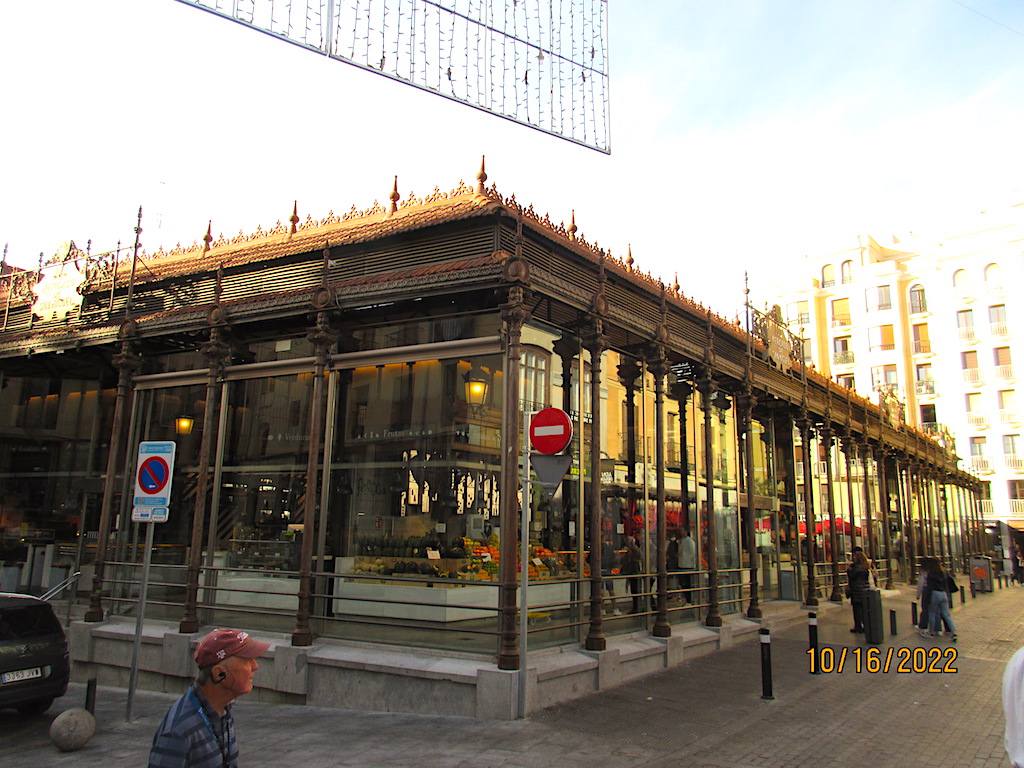

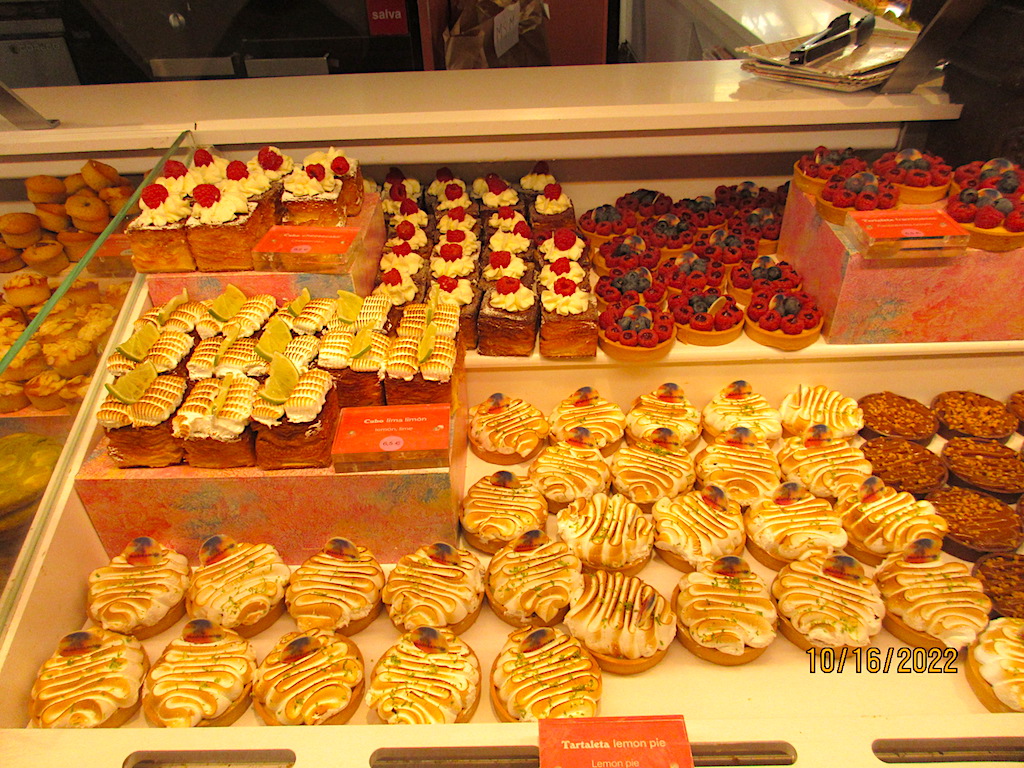
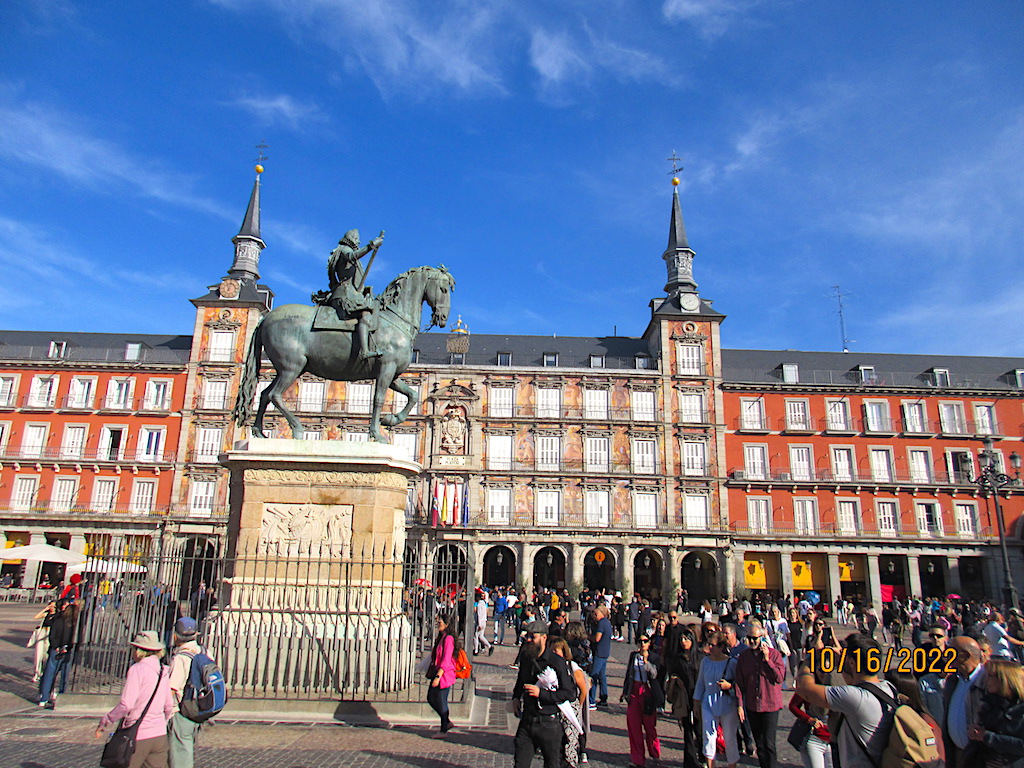
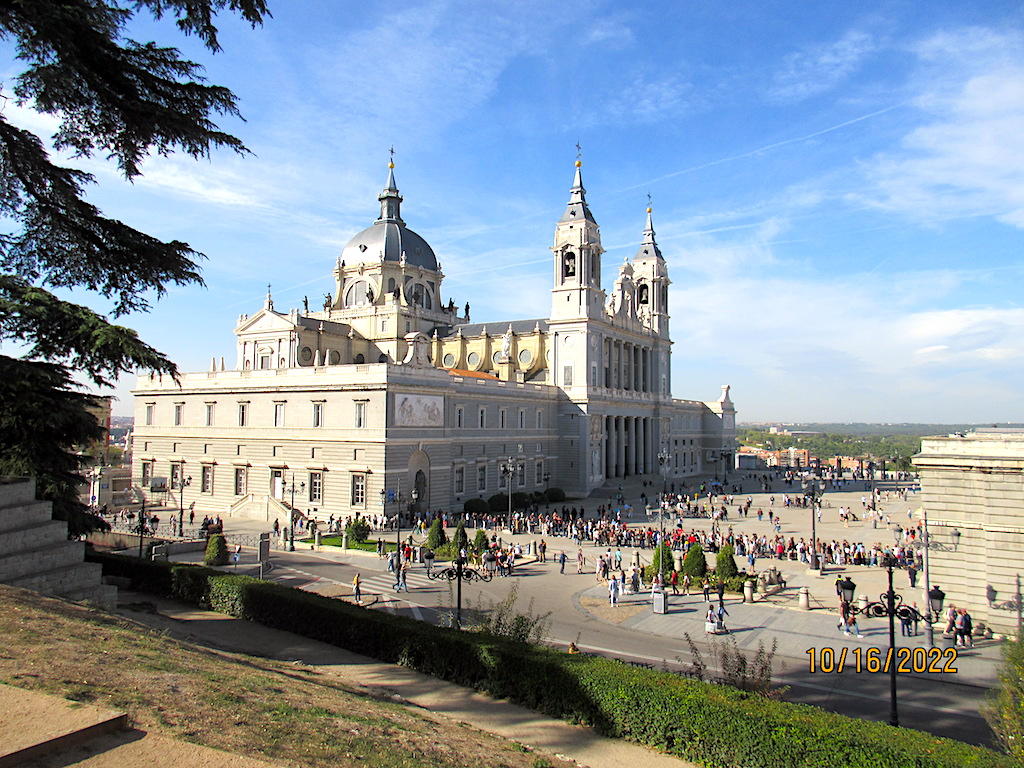

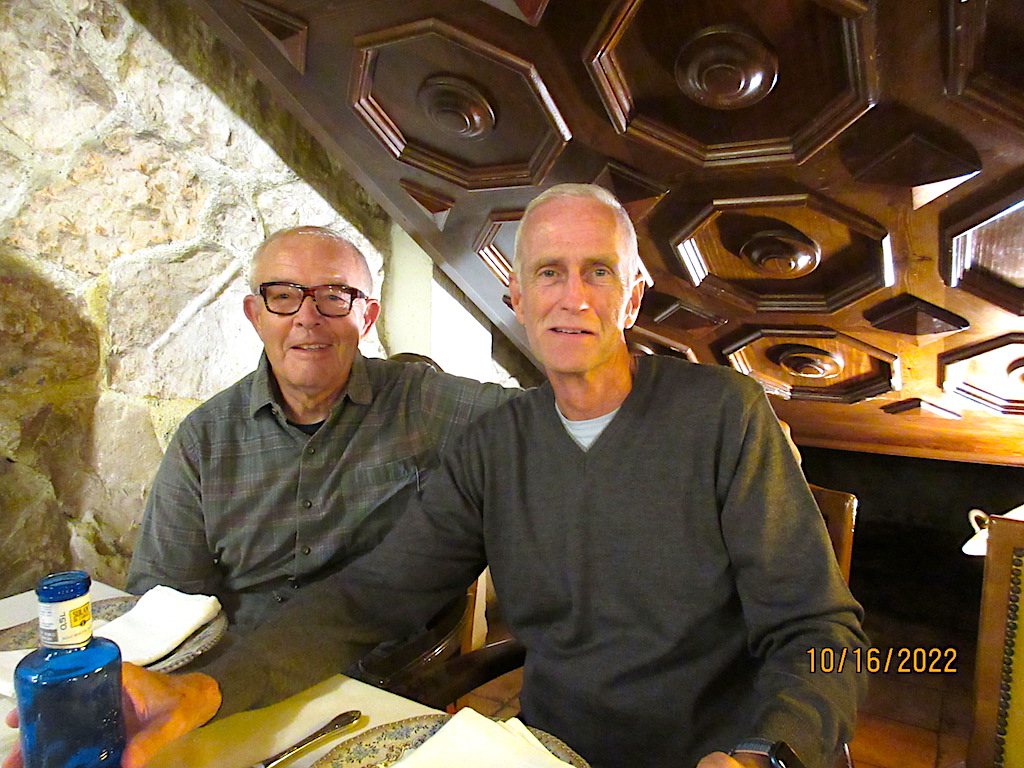
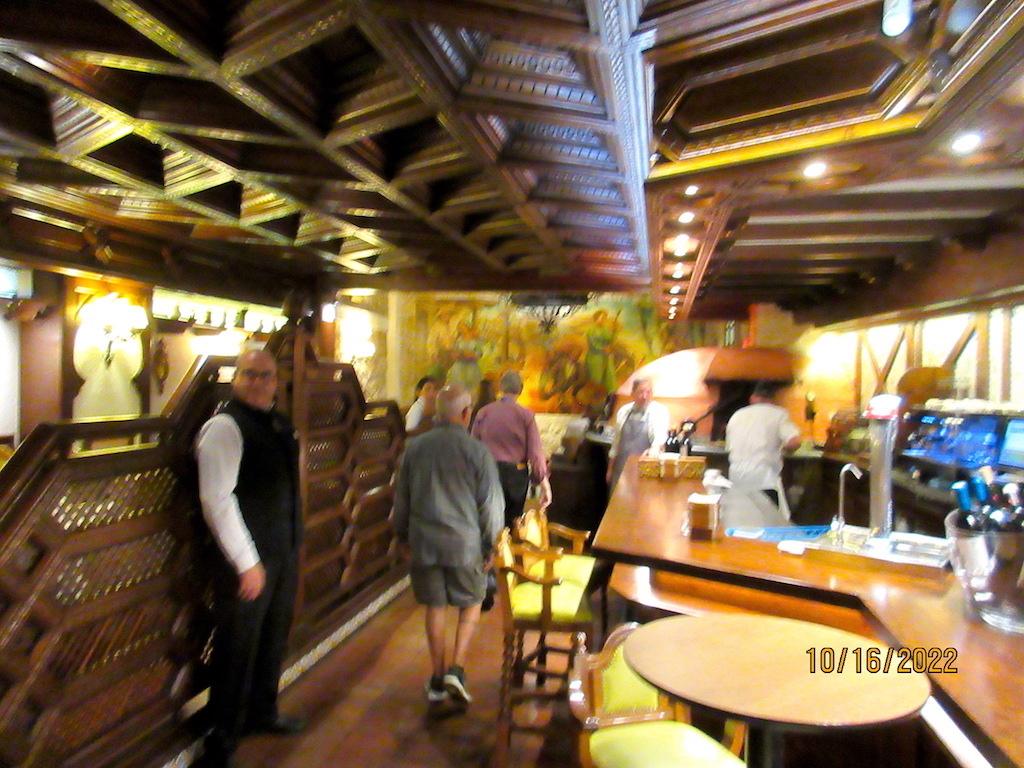
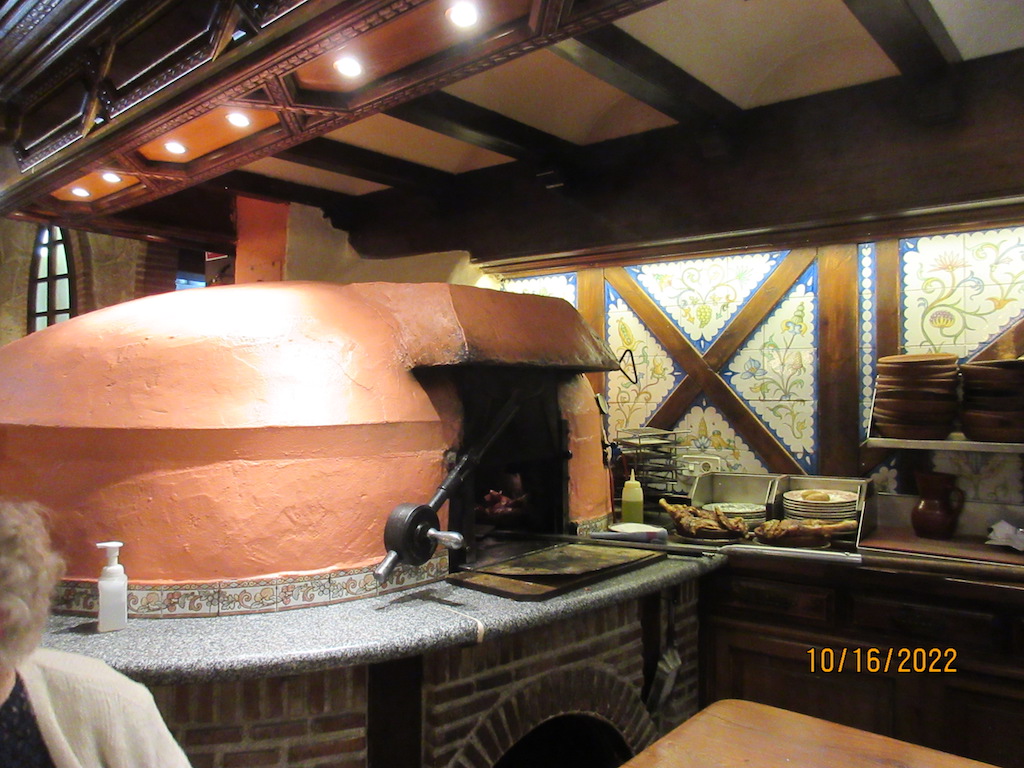
This morning we were taken on a sightseeing tour of the city. A motor coach took us to the Puerta del Sol, one of the gates in the city wall that surrounded Madrid in the 15th century. The name of the gate came from the rising sun which decorated the entry since the gate faces east.
We passed by the Atocha Railway Station also named Madrid Puerta de Atocha which is the first major railway station in Madrid dating back to 1851. It is the largest rail station serving commuter trains, regional trains and even train service to Marseille, France. After a major fire destroyed the original station it was rebuilt in 1892. Alberto de Palacio Elissagne along with collaboration from Gustave Eiffel built what was called a wrought iron renewal style structure. Two gorgeous brick buildings flank the train platforms which are covered with a steel and glass roof. In 1992 the original building was taken out of service as a newer station replaced it and it was converted into a concourse with shops and cafes. The area where the train tracks would have run is now an acre sized covered tropical garden.
We drove by one of Madrid’s largest parks at 350-acres, called Retiro Park. The park belonged to the Spanish Monarchy until the late 1800’s when it became a public park. In 2021 the park became a part of a combined UNESCO Heritage Site along with the Paseo del Prado. The park includes a man-made lake, galleries, gardens, fountains, statuary and many venues where public events are held.
The Gran Via or “Great Way” street in central Madrid is one of the city’s most important shopping areas. Madrid’s urban planners in the mid 19th century decided that a new thoroughfare should be created to connect the Calle de Alcala with the Plaza de Espana. After much planning and opposition, in 1904 the plan was approved and in 1910 construction began. The project involved the demolition of many buildings and much new construction. The entire project was not completed for nearly 20 years. The new avenue brought out many architects of the time and many beautiful new buildings.
To finish off our tour of Madrid we arrived at the Mercado de San Miguel or Market of San Miguel. Originally built in 1916 this covered market is housed in an ornate stunning glass and wrought iron building. Inside there are small stalls of vendors selling all types of food items like tapas, fresh fruits, empanadas, desserts, fish, cheeses, breads, beer, wine and sangria.
We stopped at one of the vendors where they treated us to a choice of drink and two tapas. The tapa choices were calamari, shrimp, crab, prosciutto ham and others. There was a section that had small tables to sit once you made your selection of items. Each vendor’s selection of food items was beautifully arranged making them difficult to resist if you were just planning to stop in for a look.
Compared with our experience yesterday when the streets were incredibly busy, today, on a Sunday morning, the streets were quiet and many of the shops had not yet opened. The streets are not laid out in a grid pattern, but instead curve and meander making navigating the streets difficult. Some streets are extremely narrow one-way cobble stone streets, while others are broad eight lane boulevards. Overall the streets appeared well maintained; the buildings are well kept with the exception of a vast amount of graffiti.
In the afternoon Mark took a tour of the Museo Nacional del Prado or Prado Museum while Kent stayed at the hotel to rest. He had been to the museum in the past when he was studying Spanish in Bilbao. The museum holds one of the finest collections of European art, dating from the 12th century to the early 20th century. The museum was founded in 1819 and has the single best collection of Spanish art in the world. Francisco Goya, Rubens, Titian and Diego Velazquez are some of the highlights of the collection. The collection contains more than 8,000 drawings, 7,500 paintings, 4,800 prints and 1,000 sculptures. Currently about 1,800 works of art in the permanent collection are presented in more than 100 galleries.
The building that houses the museum was designed in 1785 by architect of the Enlightenment in Spain, Juan de Villanueva on orders of Charles III. The building’s final function was not decided until Ferdinand VII, encouraged by his wife, Queen Maria Isabel de Braganza, decided to use it as a new Royal Museum of Paintings and Sculpture. The museum opened to the public in 1819 with a collection of 311 paintings to show works of art belonging to the Spanish Crown and to show the rest of Europe that Spanish art was on equal footing with other European art. The museum has continued to expand including approval in 2021 of a 60,000 square foot remodel of an existing building nearby.
There were 26 of us on the tour of the museum and we were split into two groups, each with a guide. My guide did an incredible job of taking us through the museum explaining the most important works of art. She spoke for two hours without missing a note. She easily answered folks’ questions and kept us moving along. Some museums you have trouble finding things that are impressive to you, but here everywhere you look has something of interest. It was not too busy and we used ear pieces to hear the guides commentary. It was a great afternoon.
For dinner the group was taken to a restaurant not far from our hotel called Asador de Aranda where their specialty is roasted lamb. The charming traditional styled restaurant has been in existence since 1883. It has two floors with rustic beams, plastered walls and a large wood fired oven where they roast the lamb. We were seated on the lower level where they have room for a group the size of ours; about 100 guests.
For appetizers they served Spanish omelet’s, roasted Piquillo peppers (similar to a bell pepper), black pudding with rice and chorizo pork sausage. The entrée was a roasted suckling lamb from the fired oven, a salad of greens, tomatoes and onions, and roasted potatoes. For dessert they served a puff pastry with a cream filling, coffee and tea and a homemade liquor with small dry dough donuts. Red wine, water, coffee and tea flowed as well. Everything was very good and we ate more than we needed.
After dinner many of our travel companions joined us for the 30 minute walk back to our hotel. It was a busy day but very enjoyable.
